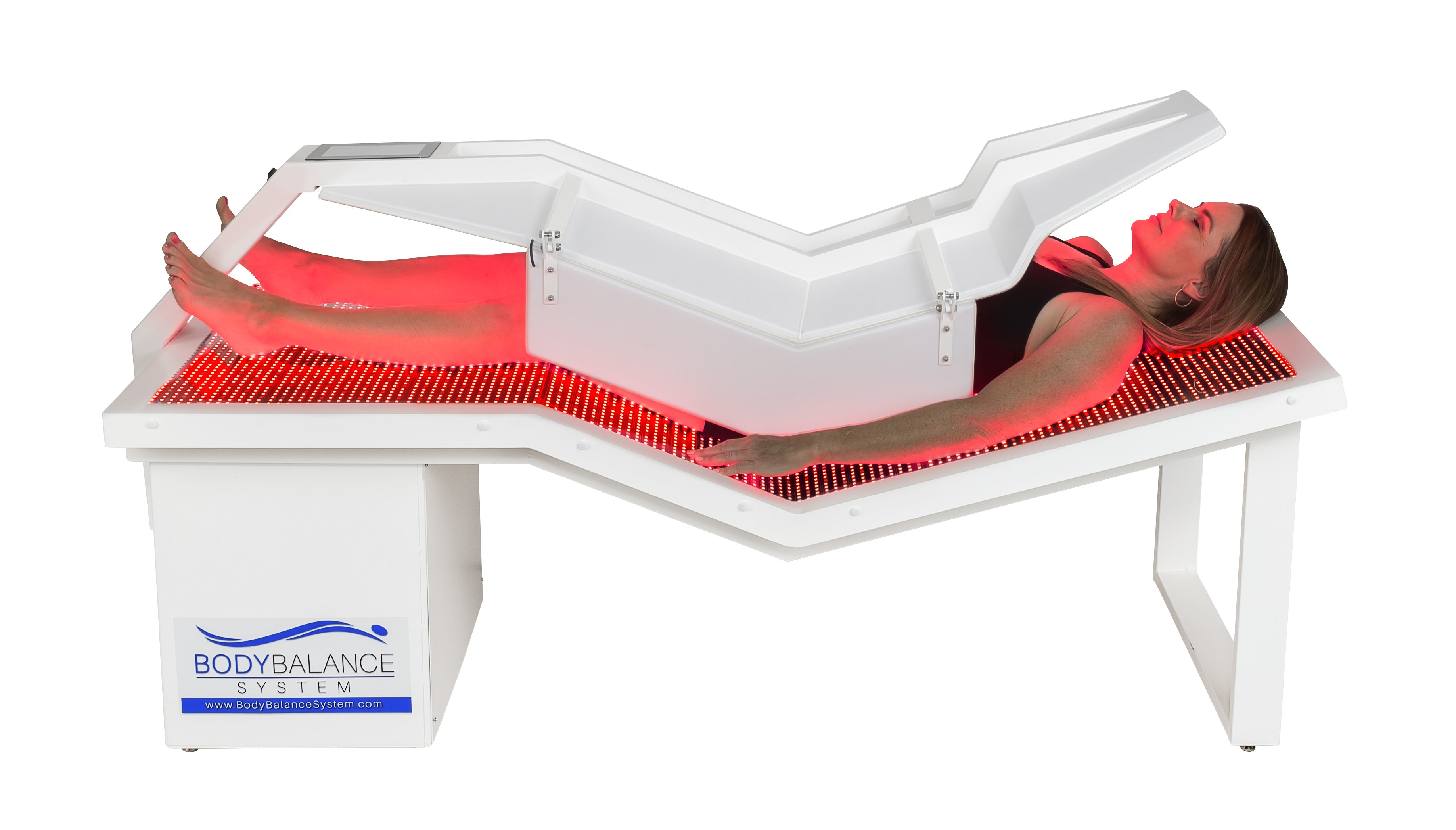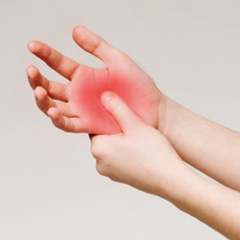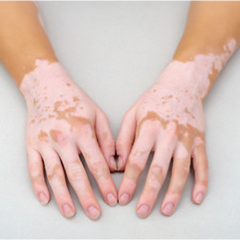
Does Red Light Therapy Really Work?
The red and near-infrared (NIR) light spectrum of visible light has a bioactive effect on the human body, which means our bodies respond to specific wavelengths of light with increased energy production in cells.
Several recent infrared light therapy research compelled us to believe this can lead to cellular level healing of the skin, and connective tissue without the harmful effects of ultraviolet (UVA/UVB) light. But does red light therapy really work?
Over the past two decades, thousands of published studies have focused on red light therapy.
Although not a cure, it is often touted as a miracle treatment for numerous health conditions—and its best-known therapeutic benefits are backed by science. The results we have seen support having faith in red light therapy.
What Is Red Light Therapy Good For?
This is is not an exhaustive list of studies on red light therapy, but it covers the most common list of ailments that can be treated with red and/or NIR light. Please follow our blog to discover more uses for this amazing therapy. Red light is ideal for skin conditions, whereas NIR light has benefits that extend deeper into the body where it is absorbed by muscle, connective tissue, and bones. The most promising area of study is the combination of red and NIR light to deliver positive effects on the body’s metabolic processes, endocrine system, immune system, and nervous system.

Skin Health
Improved skin health is the most well-known benefit of red light as it increases intradermal collagen production, meaning within or between layers of skin, which is vital for improving skin tone and reducing signs of aging. Red light therapy can heal sun damage and help reduce wrinkles and fine lines, as well as plump and firm sagging/papery skin.
Other anti-aging therapies like dermabrasion and chemical peels while popular, are relatively harsh on the skin. They work by causing controlled damage to the outer layers of the skin in order to stimulate collagen production, tissue repair, and rejuvenation. In contrast, red light therapy causes no damage to the skin. Instead, it takes an inside-out approach by stimulating natural, healthy skin regeneration at the cellular level primarily by increasing cellular energy and collagen production.
Here are several studies that focus specifically on red light therapy for skin-related issues:
- Skin health: Low level laser (light) therapy in skin, and a controlled trial to determine red light efficacy on skin health
- Fibroblasts (precursors to collagen): Fibroblast study results
- Wrinkles and fine lines: A clinical study on LED phototherapy for skin rejuvenation.
- Sun damage: LED treatment of photoaging skin.
- Facial rejuvenation: Photorejuvenation of the face

Reduced Inflammation
The Red light therapy reduces inflammation lessoning the symptoms of chronic conditions such as arthritis, autoimmune diseases (including chronic skin disorders), spinal cord injuries, brain injuries, and muscle soreness.
- Reduced inflammation: Anti-inflammatory effects of photobiomodulation

Weight Loss
As much effort as people put into losing weight and trying to keep it off, diet and exercise are not always effective. This can be due to factors such as chronic stress or chronic inflammation. Red light has a stimulating effect on the metabolism and may actually cause fat cells to shrink, for fast and effective fat loss, and associated weight loss.
- Fat cell reduction: Low-Level Laser Therapy for Fat Layer Reduction
- Reduced insulin sensitivity: Reduce body fat, insulin resistance and “metabolic inflexibility”
- Stimulated fat cell death: Low-Level Laser Therapy for Fat Layer Reduction

Muscle Growth, Performance, and Recovery
Many elite athletes regularly use red light therapy before and after training or competition to maintain peak functioning and shorten recovery time. Red light stimulates the mitochondria (the muscle cells’ energy centers) to produce more energy, which leads to faster cellular regeneration and growth. And since red light also reduces inflammation, muscles recover faster from high-intensity training.
This process also accelerates muscle recovery from injury by reducing scar tissue in muscles known as fibrosis. Left untreated, fibrosis can cause permanent loss of function or mobility. Red light supports the formation of new, healthy muscle tissue by activating stem cells in the muscles called myosatellite cells. These cells are activated in response to any kind of muscle damage, including microscopic tears that occur during training, as well as more significant tears or compression caused by injury. Instead of the haphazard jumble of cells that form scars, red light-energized myosatellite cells will form healthy new muscle tissue. Both red and NIR light are beneficial for muscle repair and growth.
- Muscle performance: Photobiomodulation in muscle tissue
- Accelerated recovery: LLLT on muscle tissue
- Stem cell activation: LLLT in skin: stimulating, healing, restoring
- Faster return-to-play after injury: Phototherapy significantly reduced return-to-play in injured university athletes

Pain Reduction
Reducing pain is a top priority for anyone dealing with injury or chronic conditions. NIR light is particularly effective at penetrating deeply into muscle and connective tissue to stimulate the growth of healthy tissue (through increasing cellular energy), increase blood flow, and reduce inflammation.
In addition, the soothing warmth of red light treatments can offer immediate feelings of wellbeing, which contributes to a decreased feeling of pain. Red light may offer long-term relief without resorting to potentially harmful anti-inflammatory medicines.
- Increased blood flow (to bring nutrients and healing substances to the affected area): Red LED photobiomodulation reduces pain hypersensitivity
- Neuropathic (nerve) pain: Low-level laser therapy on neuropathic pain relief
- Reduced inflammation: Anti-inflammatory effects of photobiomodulation
- Rheumatoid arthritis: LLLT in the treatment of rheumatoid arthritis.
- Chronic joint pain:LLLT for pain from chronic joint disorders.

Wound Healing
Healing wounds quickly has psychological as well as physical benefits. Red light activates stem cells and reduces inflammation to accelerate wound healing and supports the formation of collagen density and healthy tissue.
- Red light for skin wounds: LLLT on Angiogenesis in Wound Healing
- NIR for skin wounds: LLLT Improves Skin Wound Healing in Rats
- Stimulating healing in slow- or non-healing wounds:LLLT for Delayed Wound Healing
- Reduction of infection in wounds: LED therapy enhances wound healing
- Faster healing from cosmetic surgery and increased patient satisfaction: LED therapy therapy can improve the results following aesthetic procedures
- Post-operative wound healing: LLLT on the treatment of skin ulcers and delayed postoperative wound healing
Scar Reduction
Scars, especially in the facial area, can cause severe psychological distress. When scars are located at the joints, they can impair mobility and cause pain because scar tissue is not as elastic as normal skin tissue.
Red light therapy is used to soften and reduce the appearance of burn scars, stretch marks, keloid scars, and hypertrophic scars, though the best way to minimize the appearance of scars is to prevent them. So while red light therapy does reduce the appearance of existing scar tissue, it also encourages cells to collect around a wound to form healthy, normal cells. So, it’s best get a jump on the tissue before a scar forms.
- Scar prevention: Red LED therapy for skin scarring prevention
- Burn scars: Low Level Laser Therapy—a conservative approach to the burn scar?
- Skin wounds:LLLT Improves Skin Wound Healing in Rats
- Hypertrophic and keloid scars: LLLT for the treatment of hypertrophic scars and keloids

Bone Health
NIR has the ability to penetrate bone, where it stimulates bone repair.
- Bone repair: LLLT improves bone repair in osteoporotic rats
- Bone structure and cell activity: Red light on bone structure and cell activity
Immune System
Red light therapy can enhance immune system function by reducing inflammation; supporting the thyroid, lymphatic system, and liver; and increasing cellular energy, which gives cells enough resources to successfully fight off pathogens.
- Slowed cell death: Biphasic Dose Response in Low Level Light Therapy
- Liver regeneration: Enhanced Liver Regeneration by Low-Level Laser Therapy
- Decreased inflammation:The anti-inflammatory effects of photobiomodulation
- Thyroid health: LLLT in chronic autoimmune thyroiditis
Hair Regrowth
Hair loss afflicts more than 35 million men and 21 million women in the United States alone. Hair restoration medications often come with serious side effects, but red and NIR light stimulates dormant hair follicles into entering the anagen (growth) phase, increases blood flow, and increases collagen production to restore normal hair growth.
- RLT for hair loss: Low level laser (light) therapy on hair loss
- Comparison of red and NIR light for hair loss:LLLT for treatment of hair loss
Chronic Skin Conditions
Chronic skin conditions can cause severe psychological distress, as well as physical discomfort and pain.
Many chronic skin conditions are considered autoimmune disorders, meaning those in which the immune system mistakenly attacks the body.
Red light therapy may help get to the root of the disorder. It has proven to be effective at treating psoriasis, eczema, rosacea, and acne by minimizing skin roughness, pain, and itching.
Emerging red light therapy research is also showing promise in led light therapy to treat non-melanoma skin cancers.
- Acne: Photodynamic therapy for the treatment of acne vulgaris
- Rosacea: Response of psoriasis to red laser light
- Non-melanoma skin cancers: A Review of Laser and Photodynamic Therapy for the Treatment of Nonmelanoma Skin Cancer
- Psoriasis:Blue light vs. red light in the treatment of psoriasis

Sleep Disorders
The prevalence of sleep disorders has soared in recent years due, in part, to widespread exposure to blue light emitted from electronic devices such as computers, tablets, and smartphones. Blue light is a natural part of visible light emitted by the sun and is energizing, which is why sunlight is beneficial during the day. At night, however, blue light interferes with the body’s circadian rhythms, meaning its natural internal processes that regulate the sleep-wake cycle. Red light therapy can counteract this effect and promotes healthful sleep.
- Sleep quality and subsequent increase in endurance: Red Light, sleep quality, and endurance
- Sleep inertia: Effects of red light on sleep inertia

Hormonal Balancing and Thyroid Health
Hormonal imbalances are at the core of many chronic disorders. Red light has shown to have therapeutic effects on the thyroid, which is instrumental in regulating the body’s metabolism.
- Thyroid health: Low-level laser therapy in chronic autoimmune thyroiditis
- Reduced autoimmune activity in thyroid: Low-Level Laser Therapy and the thyroid
- Hypothyroidism:LLLT in chronic autoimmune thyroiditis
Traumatic Brain Injury, Stroke, and Brain Disorders
One of the most exciting discoveries about NIR is that it can stimulate the accelerated healing of neurons (brain cells) after traumatic brain injuries. This is because NIR can penetrate bone, including the skull. According to the first study listed below, “NIR appears to initiate a cascade of subcellular events which can yield immediate, delayed, and persistent beneficial changes in the injured neuron or other cell.”
- Traumatic brain injury: Can infrared phototherapy effectively reach the human brain?
- Brain disorders: Photobiomodulation for brain disorders
- Stroke: Infrared laser therapy for ischemic stroke
- Depression and Anxiety: Psychological benefits of near-infrared light to the forehead
- Increased melatonin production: Melatonin as a principal component of red light therapy
Stem Cell Activation
Stem cells are known as the body’s master cells because they have the miraculous capability to change into different types of cells as needed. They are found throughout the body in dormant state, ready to specialize in case of injury or other cell death. Stem cells are essential for tissue repair, wound healing, and a healthy immune system.
- Stem cell activation:Low-level laser (light) therapy (LLLT) in skin
This list covers the most popular uses for Red light therapy that came about through red light therapy studies. As more research and case studies emerge, we will post the results on our blog.
How Long Should You Use Red Light Therapy?
Because red light therapy works at the cellular level, the best results may take several weeks or months. Skin cells, for example, renew approximately every 27 days, and not all at once. You may experience some immediate relief, but consistent use over time will give you the very best results.
Every individual and every condition will react differently to red light therapy. How fast you see results can depend on the severity of your condition, age, overall health, immune system health, and lifestyle choices.
Many studies show satisfactory results after 8 to 12 weeks of consistent use. For many conditions, including chronic skin disorders, a maintenance program can prevent symptoms from reappearing.
We generally recommend two 20-minute session per week.





